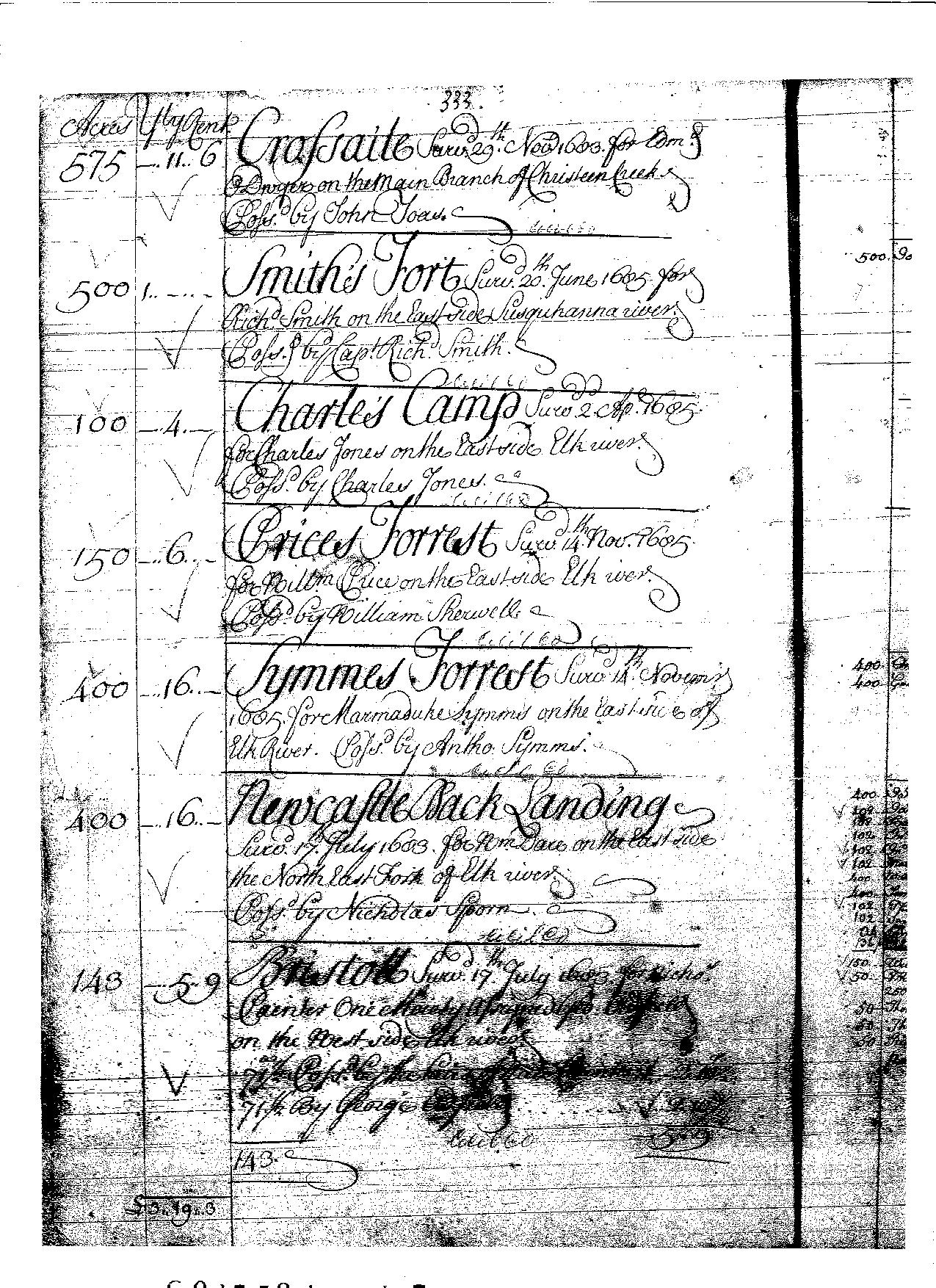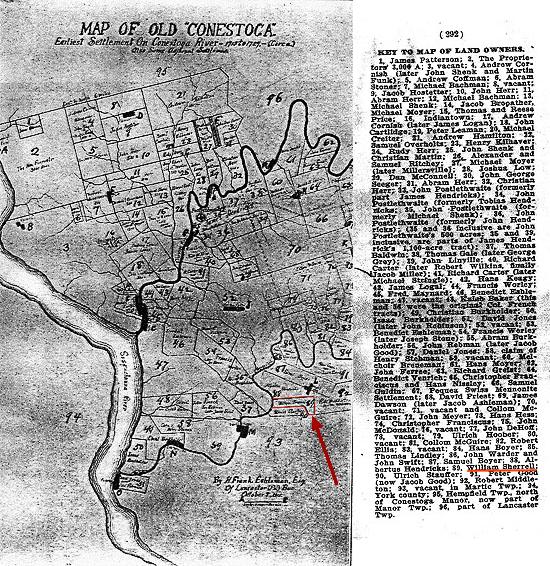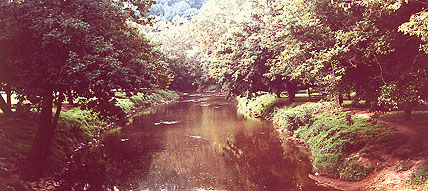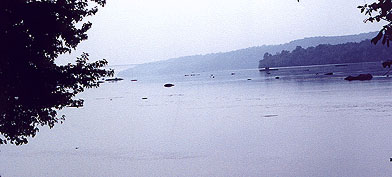William Sherwell of Devon who came to the Maryland Colony
1 Mar 1686. Western Circuit prisoners reprieved to be transported to Barbados.
Devon: Nathaniel Baker of Shute; Charles Truist of Plymouth; John Thorne of Rewe; Henry Wyatt of Ottery, tanner; William Sherwell of Modbury, weaver; Richard Doe of Plymouth; James Baker of Holwell.
This report is from:
Complete Book of Immigrants 1661-1699 by Peter Wilson Coldham, 1990, A Comprehensive Listing Compiled from English Public Records of those who took ship to the Americas for Political, Religious, and Economic Reasons; of those who were deported for Vagrancy, Roguery, or Non-Conformity; and of those Who were sold to labour in the New Colonies., Genealogical Publishing Co.
----------------------------------
Here are some other bits of information I found out about William Sherwell
Abstract of Cecil County Maryland Land Records 1673-1751 by June D. Brown, 1998, Family Line PublicationsCecil County Land Records 1674-1810, [WK 979], p.255, Deed. William Price, Sr. of Cecil Co., planter, and Margarett his wife, for 3,000 lbs. of tobacco, to William Sherwell of the same place, planter, land called Price's Forest on the east side of the Elk River. Made 8 Mar 1702. Wit: Edward Bonwicke, Thomas Cox, Robert Money. Ackn: 10 Mar 1702. Rec: 19 Mar 1702. John Dowdall, Clerk.
[copy of deed with name of William Sherwell underlined in red and the mark of William Price also indicated in red]
[large copy of the deed can be read more easily, 2.7MB]
NOTE: this document is very difficult to read but the larger version is more clear and most of it can be read except where the paper had been folded.
------------------------------------
Inhabitants of Cecil County 1649-1774 by Henry C. Peden, 1993, Family Line Publications
Debit Books of Cecil Co. 1734-1776, Adam Sherwell, Three Partners - 1734, 1760, William Sherwell, Jr., Three Partners - 1734, 1755-1761 (source, Maryland State Archives, Index card file 58)
------------------------------------
Index to Cecil County Historical Resources by Gary Griffith, pg. 122, rent rolls of Cecil County 1658-1707
SR4379-1, p. 333, MD Rent Rolls 1658-1776, Cecil County
Prices Forest surveyed 14 Nov 1685 for William Price on the Eastside Elk River possessed by William Sherwell.
150 acres, yearly rent _..6.._(i.e. 6 schillings)
see fourth item; note that the date, Nov. 14, 1685, is the date of the survey

see also: Colonial Sherrills Map of places.



Historical point of reference: William Penn first arrived in North America in 1682. He stayed for two years then returned in 1699 and stayed until 1701.
Conestoga Township of Lancaster County
Extracted and excerpted from History of Lancaster County, Pennsylvania with Biographical Sketches of Many of the Pioneers and Prominent Men.ed. Franklin Ellis and Samuel Evans, Philadelphia, Everts & Peck,1883
Who were the Conestoga neighbors in 1729? When did they come here? Where did they live hereabouts? The assessed inhabitants of what is now Lancaster county in 1718 were 129 male heads of families and 12 single men, or 141 in all, about one-third English and two-thirds German. But there were some Welsh of Caernarvon and Whites of other sections also here. In 1722, the most thickly settled sections of Lancaster County were known as Conestoga, Donegal, and Pequea, and they included seven-eighths of all the white people then in what is now our county. Donegal in 1722 had 92 male beads of families; Pequea had 42, and Conestoga had 244. In 1724 Pequea embraced the land about the headwaters of Pequea creek (Donegal included all west of main Conestoga river, principally north of the site of Lancaster), and in it lived a considerable number of German-Swiss, though most of the inhabitants were Scotch-Irish. Conestoga embraced all of our present county from the Susquehanna from and below the mouth of Pequea creek up to Columbia and northeastward of that width beyond Strasburg, Bird-in-Hand, the Earls and Ephrata, etc.
Let us see who the old Conestoga neighbors were: They were in nationality, Scotch-Irish, English, and German-Swiss. They were religiously, Episcopalian, Quaker, Presbyterian and Mennonite. They were industrially, farmers, merchants, millers, blacksmiths, wheelwrights and tradesmen. In discussing these old Conestoga neighbors we shall try to keep within a radius of five or six miles of the spot where we now stand (Postlethwaite's).
Let us now draw a picture of this region all about us as it was 186 to 200 years ago (from 1915). This is the 200th anniversary of the taking up of the central tract of old Conestoga, where we now stand the beginning of the little group of houses called Conestoga town, started in 1715 by James Hendricks, who in that year secured the right to 1,166 acres of land reaching from Rock Hill up Conestoga River eight miles, almost to Wabank, and cast along and south of Stehman's Run, nearly to South Daiiville Old Mennonite church. This settlement differed from the Pequea settlement in the east. While the Pequea colony at Willow street were all Swiss Mennonites, the settlement on Conestoga consisted of a Scotch-Irish and English core, bordering on both sides of the river, surrounded by scores of Gerrnan-Swiss on all sides. Now who were these old Conestoga neighbors of Postlethwaite's time? Who lived within a radius of five or six miles from this place in the days when our first courts were held here, and before? Of English and Scotch-Irish residents, starting with John Postlethwaite and his grown-up son William, and passing up the Conestoga river on the eastern side, dwelling in consecutive order on or near the "Great Road," there were: James Hendricks, John Hendricks, Tobias Hendricks, Thomas Baldwin, Thomas Gale, George Gray, John Linvill, all owners of parts of the James Hendricks tracts: John Farrer, Richard Grist, John Grist, Wm. Hughes, Edmund Cartlidge,: John Powell, Thomas Doyle, Stephen Atchison, and James Lewis. The Scotch-Irish and English people across from the above Postlethwaite's on the Manor side were Thomas and Reese Price, Alex. and Sami. Ritchey, Joshua Low, Danl. McConnell and Alex. Beuse practically all of whose lands adjoined the stream. On the Conestoga side, going up the stream from Postlethwaite's there were Robert Wilkins, Thomas Wilkins, David Priest, James Dawson, Richard Carter, Patrick Keregan. Somewhat separated from the others and over toward Pequea creek, near Susquehanna, were Peter Kline, Peter Creamer, Francis Worley, Joseph Rebman and Robert Baker. Going down the stream on the Manor side there were Samuel Ritchey, Andrew Cornish and John Cartledge as English neighbors. Over to the east on Pequea creek the English and Scotch-Irish, beginning about the neighborhood of Marticville and going down the creek were: William and Robert Middleton, Albert Hendricks, William Sherrell, David Jones, Samuel Jones, John Robinson, John McCreary, practically all on the cast side of the creek; and Daniel Jones on the west side. Off to the west on and near Susquehanna river, beginning about Washington borough and extending up and down the river, the English inhabitants were Edward Srnout, James Patterson, Moses Comb, Martha Bezelion (Bazeillon), James LeTort, Thomas and Robert Wilkins, Jonah Davenport, John Hendricks, and the Chartier descendants. About two miles southeastward fromPostlethwaite's,extending along the southwest bank of Pequea creek from the neighborhood of the "Burnt Mill" below Marticville to near the Conestoga township line, there was a small Irish settlement consisting in succession, downstream, of Robert Ellig, Collum McQuire, John McDonald, and Francis McDonald. And about a miles west of John Cartlidge's farm was the village of the Indians, the Conestoga Indian town. There was another little Indian village in a loop of the Conestoga near Atkinson's.